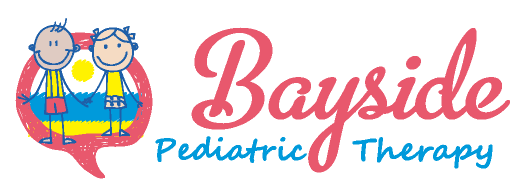AAC stands for Augmentative Alternative Communication. It is an alternative way to communicate without words. It can include gestures, sign language, picture exchange, and communication devices.
If your child is over the age of two and is not talking or very unintelligible then yes, AAC is very appropriate! Think how frustrated your child might be not being able to tell you what they want, when they are hurt, what they like and don’t like, etc. Communication is the key to open up your child’s world! Don’t for a second think that denying them AAC will delay their speech output. There is evidence upon evidence that AAC only increases verbal output and speech intelligibility. Let’s not frustrate your child anymore by denying them an alternative way to communicate if using words is too difficult for them right now for whatever reason they may be.
Usually when a young child with no medical diagnosis comes in with a speech delay, we start with simple baby signs (i.e. more, all done, please, help, eat, milk). This helps decrease their frustration immediately. We don’t need any pictures printed out or technology. Sometimes these few signs alone are the kickstart they need to start working on some speech sounds and words. When the pressure of having to talk is taken away from them, many times it frees them up and they just start trying to talk. Unless your child is deaf, signs are never meant to be a forever way to communicate just a short bridge to get them to speech.
If signs seem frustrating to your child or their fine motor skills do not allow for them to make signs, a picture exchange system or communication picture board may be used. The picture exchange system is based on a behavioral approach to increase joint attention and independent communications attempts without being prompted. In other words, it helps a child communicate what they want without asking them “What do you want,” or cueing them with “I want…” Eventually the child will work up to carrying a communication book or communication board that allows them to communicate with words and phrases. There are success rates saying that 70% of children using this system will start talking. This is mainly because of its behavioral approach. It has evidence to back it up.
If a child has mastered the picture exchange system but still isn’t talking at an age appropriate or intelligible level, a communication device may be considered. These are often called Speech Generated Devices (SGD). There are many different types of SGDs. There are low tech options that may have just 8-10 pictures and high tech ones that use 5,000 words on a dedicated speech device. A full AAC evaluation should be completed to figure which option would be best for your child. Many parents download a speech app on an ipad, and get frustrated when it doesn’t work. A trained speech therapist should help you determine which app and/or device is best for a child after trial testing several of them. They will train you how best to use this device.
If your child has a medical diagnosis, such as cerebral palsy, a speech generating device may be used sooner than signs and pictures because of accessibility and fine motor control. We can use different switches and try different devices for the best accessibility for your child. As mentioned above, a full AAC evaluation with several devices and switches should be tried to determine the best device for your child.
AAC is constantly changing and developing in our fast paced and high tech world! It is an exciting time for our AAC users.

